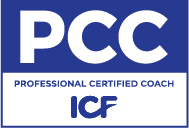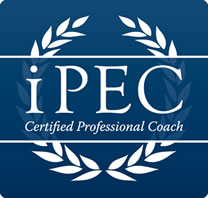
Career joy is a choice. But, how does one opt for career joy? It takes self-awareness, self-appreciation, gratitude, a focus on others, and a determination to control one’s life and career. Here are a few pointers to get you going:
Self-Awareness of your strengths is the foundation of career joy. The Gallup organization which has created an easy assessment to identify your strengths, Strengthsfinder 2.0, has defined them as a combination of talent, knowledge, and skills. When all three are present, the result is a strength. So, think about whether you are leveraging your talents, applying your knowledge and using your skills on a daily basis. If you are using your strengths, then you are bound for career success and fulfillment.
If you are not, you probably are unhappy at work, dread Monday mornings, and feel stuck. If so, determination to take action on a career move is in order. It’s difficult to make a change because the comfort zone is an easier option. But, the outcome of lack of career joy is poor performance. All of a sudden your attitude goes from motivation to apathy. Two red flags can tell you something is amiss: an “I don’t care” attitude begins to show in your productivity, attention to detail is waning, and relationship issues begin to crop up. Also, depression can creep into daily work and can lead to physical symptoms that make you ill. These signs are an indicator you are very close to the precipice of losing your job. Instead, be proactive in opting for career joy by making the hard choice to get back into the job market for something better suited to using your strengths.
Self-Appreciation is about understanding that you are unique. Your strengths, personality, and energy force are different from others. Often we take our strengths for granted because they come easily to us. How you use your strengths combined with your personality, the experiences you have had, and the way you navigate through challenges will be unlike anyone Just as every snowflake is different, there is no one like you. We tend to be tough on ourselves in the pursuit of perfection. We beat ourselves up for what we did wrong. We focus on the negatives more than the positives. It’s important to appreciate what we have done right. It’s all about progress – not perfection. A little determination to do more self-appreciation will bring more career joy.
Gratitude takes time; and with busy lives, time is a rare commodity. Be grateful for problems disguised as an opportunity. Be grateful for co-workers who challenge you, be grateful for families who support you. Be grateful for the crummy boss who makes you decide to leave, be grateful for the small kindnesses extended your way every day. Many have found success in keeping a gratitude journal. Writing down the things that you are grateful for each evening is a great send off to sleep. Journaling does not come easy for some, but if you have the self-determination, give it a try-on for size. Then, if you want to go the extra mile, tell those who have helped you in your career how much you appreciate them, whether in person, a call or in a note. It will bring you both career joy and make the relationship much richer.
Be of service to others in all you do. Careers are made up of relationships. Building one relationship at a time yields wonderful friendships, often for a lifetime. You can reach out up or down the ladder or laterally. Make a concerted effort to reach out to three people a week to catch up on what they are doing. It’s about how you can be of service to them. Not vice-versa. Although not to say at some point, they may return the favor. It is much more rewarding giving than receiving. It is a dying art of keeping track of people and their lives earnestly. Facebook and other social media are so much easier to use with a simple “like.” But, the genuine concern, deep listening, curiosity and being there when needed is best-shown one-on-one. Sincere relationships and doing for others will build your network into a powerhouse. Let’s not forget mentoring others as a way of giving back your strength, knowledge, and skills. Mentoring can change a career life forever. The determination to keep the momentum of reaching out to three people a week will bring you career joy as you make others feel you truly care.
The inner joy of knowing and using your strengths every day, appreciating your own self, being grateful, and being of service to others will bring career success and fulfillment. It just takes determination to make the choices that foster career joy.
To Your Career Success,
© Katie Weiser, 2018. Unauthorized use and/or duplication of this material without express and written permission from this blog’s author/owner is strictly prohibited. Excerpts and links may be used, provided that full and clear credit is given to Katie Weiser with appropriate and specific direction to the original content.












